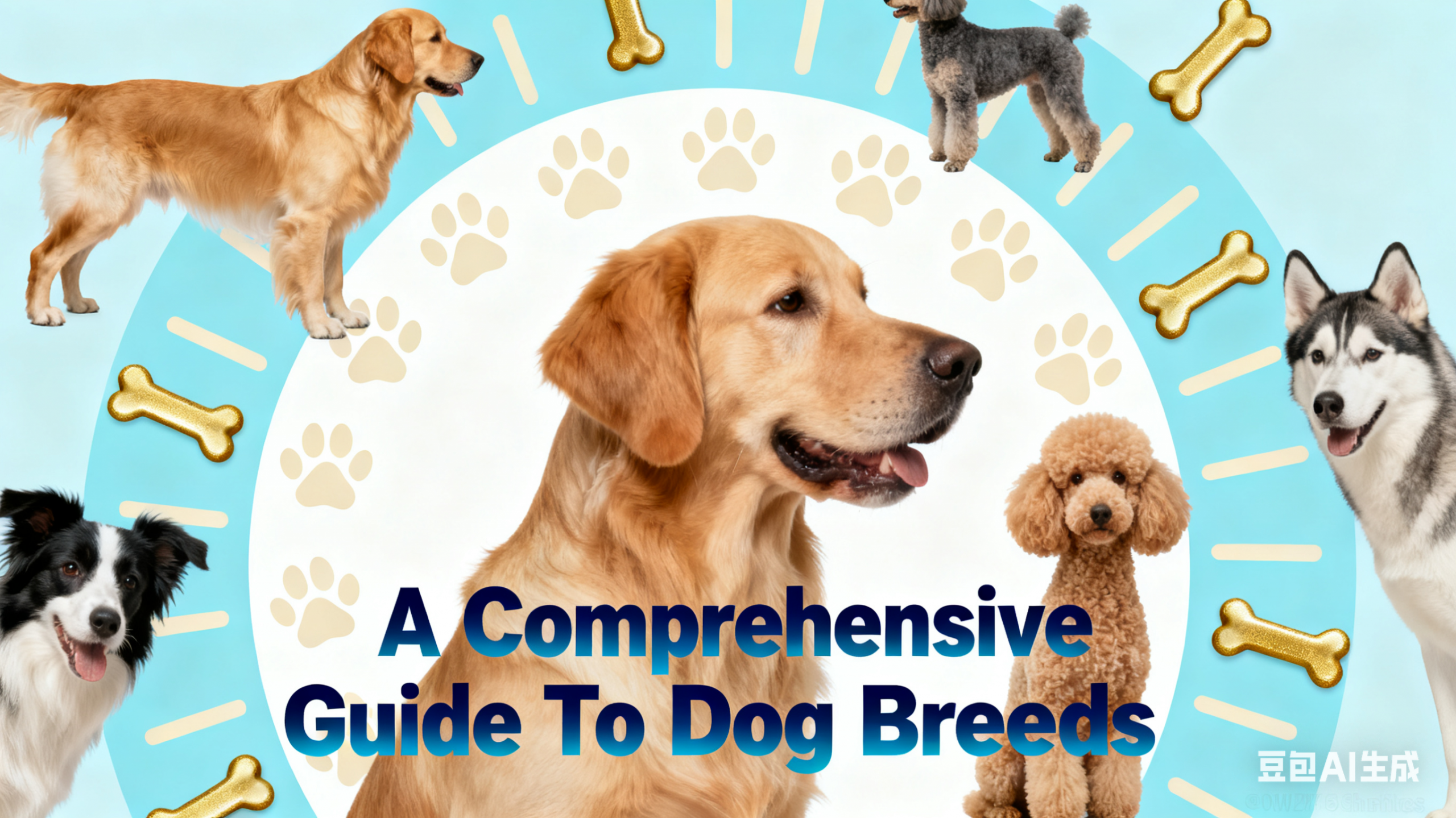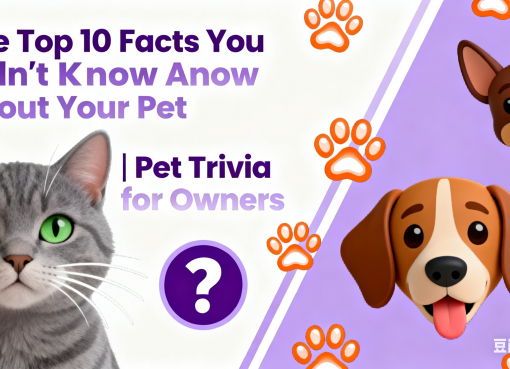A Comprehensive Guide To Dog Breeds: Choose Your Perfect Furry Match (2025)

Table of Contents
- Introduction: Why a Comprehensive Guide to Dog Breeds Matters
- First: Puppy vs. Adult Dog—Which Is Right for You?
- 6 Key Dog Breed Groups: Traits & Ideal Homes
3.1 Toy Breeds: Apartment-Friendly & Perfect for First-Timers
3.2 Working Breeds: Loyal, Active & Need Space
3.3 Hound Breeds: Independent & Low-Maintenance
3.4 Terrier Breeds: Territorial & High-Energy
- Key Breed Characteristics to Compare
- Step-by-Step: How to Choose the Right Dog Breed
- Conclusion: Find Your Furry Match
Introduction: Why a Comprehensive Guide to Dog Breeds Matters
A dog is more than a pet—they’re a family member. But with over 340 recognized dog breeds worldwide, picking the right one can feel overwhelming. This comprehensive guide to dog breeds takes the guesswork out: we organize breeds into easy-to-understand groups, highlight their unique traits, and match them to different lifestyles—so you can find a dog that fits your home, schedule, and personality.
Whether you’re a first-time owner in a city apartment, a busy parent with young kids, or an outdoor lover who hikes every weekend, the right breed exists. The goal? Avoid common mismatches (like a high-energy Husky in a studio) and build a bond that lasts for years. Let’s start with the basics: puppy vs. adult dog.
First: Puppy vs. Adult Dog—Which Is Right for You?
Before diving into breeds, decide if a puppy or adult dog fits your life. The difference is age (not size)—and it impacts time, effort, and care:
- Puppies (under 1 year): Best for families with kids ages 5+ (younger kids may accidentally hurt fragile puppies). Puppies need constant supervision (potty training, teething), daily play, and early socialization. They’re a long-term commitment but let you shape their behavior from the start.
- Adult Dogs (1+ years): Ideal for families with young kids or busy owners. Most are already potty-trained, know basic commands, and have calmer energy. They still need love and exercise, but they’re less demanding than puppies.
A 2025 survey by the American Kennel Club (AKC) (a DoFollow link) found that 68% of first-time owners choose adult dogs—they’re more predictable and easier to integrate into daily life.
6 Key Dog Breed Groups: Traits & Ideal Homes
Breeds are grouped by their original purpose (e.g., hunting, guarding)—and these groups tell you almost everything about their personality and needs. This section of our comprehensive guide to dog breeds breaks down the 6 most common groups:
3.1 Toy Breeds: Apartment-Friendly & Perfect for First-Timers
Toy breeds weigh under 20 pounds—small in size, big on personality. They’re bred to be companions, making them great for first-time owners or seniors.
Popular Breeds:
- Chihuahua (feisty, loyal, loves cuddles)
- Maltese (gentle, hypoallergenic, good with kids)
- Pomeranian (playful, energetic, loves attention)
Key Traits:
- Exercise needs: 20-30 minutes of daily play (indoor fetch works!)
- Living situation: Apartments or small homes (no yard needed)
- Best for: City dwellers, seniors, first-time owners, families with older kids
Pro Tip: Toy breeds can be prone to separation anxiety—avoid leaving them alone for 8+ hours a day.
3.2 Working Breeds: Loyal, Active & Need Space
Working breeds were bred to help humans (herding, guarding, pulling sleds). They’re intelligent, loyal, and thrive on tasks—but they need lots of space and training.
Popular Breeds:
- German Shepherd (protective, trainable, great for families)
- Siberian Husky (energetic, social, loves cold weather)
- Rottweiler (calm, confident, loyal to their pack)
Key Traits:
- Exercise needs: 60+ minutes of daily activity (hiking, agility training)
- Living situation: Houses with yards (apartments are too small)
- Best for: Active owners, families with older kids, those who want a guard dog
Pro Tip: Working breeds get bored easily—provide puzzle toys to keep their minds sharp.
3.3 Hound Breeds: Independent & Low-Maintenance
Hounds were bred to track prey (rabbits, rodents)—so they have a strong sense of smell and love to explore. They’re independent but loyal, making them great for laid-back owners.
Popular Breeds:
- Beagle (friendly, curious, good with kids)
- Basset Hound (calm, lazy, loves napping)
- Greyhound (gentle, fast, but surprisingly low-energy indoors)
Key Traits:
- Exercise needs: 30-45 minutes of daily walks (keep them on a leash—they’ll chase scents!)
- Living situation: Apartments or houses (as long as they get walks)
- Best for: Remote workers, seniors, families who want a low-fuss dog
Pro Tip: Hounds are vocal—they howl, not bark. If you live in a quiet building, this may not be the group for you.
3.4 Terrier Breeds: Territorial & High-Energy
Terriers were bred to kill vermin (rats, mice)—so they’re feisty, territorial, and full of energy. They’re great for owners who want a protective, playful dog.
Popular Breeds:
- Jack Russell Terrier (energetic, intelligent, needs lots of play)
- Scottish Terrier (independent, stubborn, loyal to one owner)
- West Highland White Terrier (friendly, outgoing, good with kids)
Key Traits:
- Exercise needs: 45-60 minutes of daily activity (fetch, agility)
- Living situation: Houses with yards (apartments may feel cramped)
- Best for: Active owners, those who don’t mind a stubborn streak
Pro Tip: Terriers don’t get along with small pets (cats, hamsters)—their prey drive is strong!
3.5 Sporting Breeds: Athletic & Great for Active Families
Sporting breeds were bred to hunt and retrieve (birds, ducks)—so they’re athletic, friendly, and love to play. They’re perfect for families who spend time outdoors.
Popular Breeds:
- Labrador Retriever (gentle, playful, great with kids—America’s most popular breed!)
- Golden Retriever (loyal, smart, loves water)
- Cocker Spaniel (affectionate, calm, good for first-timers)
Key Traits:
- Exercise needs: 60+ minutes of daily activity (swimming, hiking, fetch)
- Living situation: Houses with yards (they need space to run)
- Best for: Active families, outdoor lovers, those who want a trainable dog
Pro Tip: Sporting breeds shed a lot—invest in a good vacuum!
3.6 Non-Sporting Breeds: Versatile & Kid-Friendly
Non-sporting breeds are a “catch-all” group—they were bred for everything from herding to lap-sitting. They’re versatile, friendly, and fit many lifestyles.
Popular Breeds:
- French Bulldog (calm, playful, apartment-friendly)
- Poodle (smart, hypoallergenic, comes in toy/miniature/standard sizes)
- Boston Terrier (affectionate, quiet, good with kids)
Key Traits:
- Exercise needs: 20-45 minutes of daily play (varies by breed—Frenchies need less, Poodles need more)
- Living situation: Apartments or houses (most adapt well)
- Best for: Families with young kids, first-time owners, allergy sufferers (Poodles!)
Pro Tip: Non-sporting breeds have diverse health needs—research each breed’s common issues (e.g., French Bulldogs have breathing problems).
Key Breed Characteristics to Compare
When using this comprehensive guide to dog breeds, compare these 4 traits to narrow your choice:
- Affection Level:
- High: Golden Retriever, Maltese (love cuddles all day)
- Medium: Beagle, Boston Terrier (affectionate but independent)
- Low: Scottish Terrier, Greyhound (show love on their terms)
- Barking Tendencies:
- High: Chihuahua, Jack Russell Terrier (alert to every sound)
- Medium: German Shepherd, Beagle (bark to alert you)
- Low: Basenji (they “yodel” instead of barking!), Greyhound
- Exercise Needs:
- High: Husky, Labrador Retriever (need daily long walks/runs)
- Medium: Beagle, Poodle (need regular play)
- Low: Basset Hound, French Bulldog (happy to lounge)
- Common Health Issues:
- Toy breeds: Dental problems (small mouths = crowded teeth)
- Working breeds: Hip dysplasia (German Shepherds, Huskies)
- Sporting breeds: Joint issues (Labradors, Golden Retrievers)
Always check breed-specific health risks with your vet—many can be prevented with proper care.
Step-by-Step: How to Choose the Right Dog Breed
Use this 3-step process to turn our comprehensive guide to dog breeds into action:
- Assess Your Lifestyle:
- Home: Apartment? House with a yard? (Toy/non-sporting breeds for apartments; working/sporting for yards)
- Schedule: Do you work 9-5? (Adult hounds/non-sporting breeds handle alone time; puppies need more care)
- Family: Young kids? Allergy sufferers? (Labradors/Golden Retrievers for kids; Poodles for allergies)
- Narrow to 2-3 Breed Groups:
- If you’re active: Sporting or working breeds
- If you’re laid-back: Hound or non-sporting breeds
- If you’re a first-timer: Toy or non-sporting breeds
- Test the Fit:
- Visit a shelter or breed-specific rescue (e.g., Husky Rescue, Poodle Rescue) to interact with dogs.
- Talk to owners: Ask a friend with your target breed about their daily routine.
- Consult a vet or trainer: They can confirm if a breed fits your home.
For example: If you’re a remote worker in a studio apartment with no kids, a Basset Hound (hound group) or French Bulldog (non-sporting) would be a great match.
Conclusion: Find Your Furry Match
This comprehensive guide to dog breeds proves there’s no “best” breed—only the best breed for you. By matching breed traits to your lifestyle, you’ll avoid frustration (no more a hyper dog in a small space!) and build a bond that lasts 10-15 years.
Remember: Adoption is a wonderful option—shelters have mixed-breed dogs that combine the best traits of multiple groups. Whether you choose a purebred or a mix, the key is love, patience, and meeting their needs.
Your perfect furry friend is out there—this guide is just the first step to finding them.
Once you’ve chosen a breed, learn how to keep them healthy with our guide: How to Choose a Vet for Your Pet — a good vet will help you care for your breed’s unique needs.




Leave a Comment